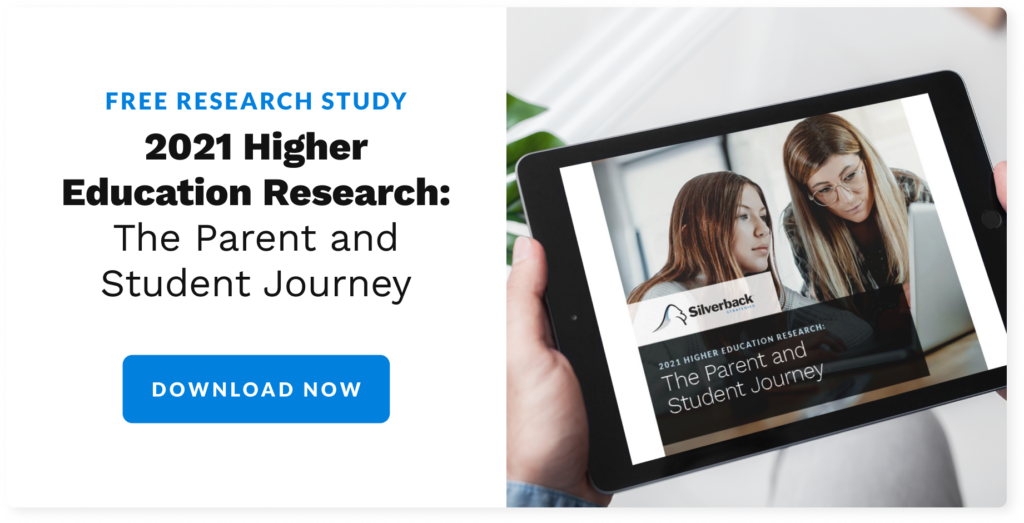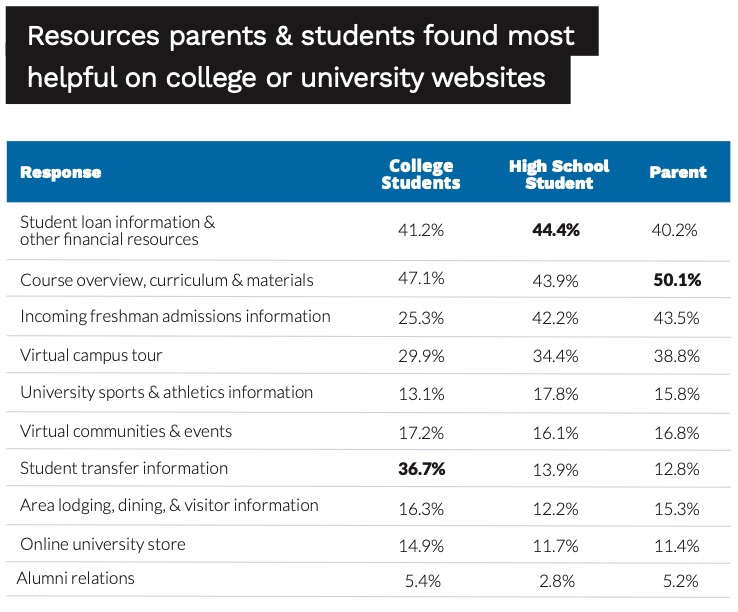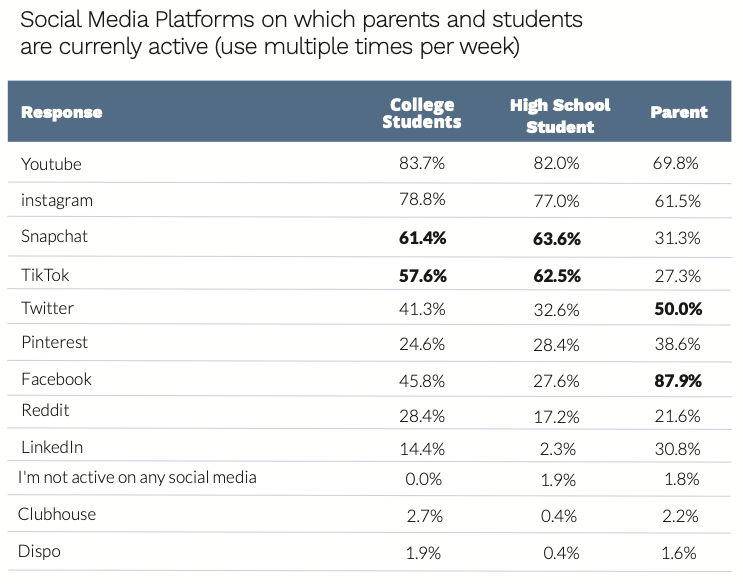
Increasing enrollments is a major indicator of performance for colleges and universities. This starts by generating more qualified applicants. But higher education marketers were faced with major disadvantages during the pandemic. For example, recent research on high school students has found that in-person campus visits did not play a significant role in selecting a college or university in 2021.
In fact, only 23% of high school students said they visited a university campus between March 2020 and March 2021. This neutralized the “campus experience” so many colleges and universities have relied on in the past.
So how can colleges and universities drive more enrollments? With a high-performance website and sound digital marketing strategy.
About the Research
In March of 2021, Silverback Strategies surveyed 1,071 parents and students in the U.S. Questions focused on their experience searching, finding and evaluating higher education alternatives. The sample includes perspectives from parents, high-school students, and first-year college students who graduated in 2020. This provided a holistic view of these key audience segments.

What role does a university website play in the student journey?
This research on high school students has found that more than 90% plan to enroll in a college or university. And more than 70% of high school students went online to evaluate alternatives. This means high school students—and their parents—likely use search engines for initial research on colleges and universities.
It’s critical for higher education marketers to have an easy-to-navigate website with the resources parents and students need. Websites need to have the technical components to create a seamless user experience. But they must also be optimized for search through content that appeals to both students and parents.
What information do high school students find valuable on university websites?
In this research study, we asked both students and parents which school-provided resources they found most helpful on a university website. Parents placed a slightly higher emphasis on admissions information, course overview, curriculum, and materials. Students were mostly aligned with parents, but found loan and financial information most helpful.

Higher education marketers have an opportunity to gain search visibility with content about details of courses and programs. These detailed pages would target long-tail searches. Listen to the podcast episode below to hear more about SEO-driven content strategies (2:38).
In the example shared on the podcast above, about 1,200 people every month search the term “types of nursing degrees.” Colleges or universities who offer nursing degrees should create a page about their nursing program that answers that question. It’s a great way to get in front of parents and students at this point in their buying journey.
On which social media platforms can higher education marketers reach parents and students?
This research on high school students has found that social media has become an important channel to reach both students and parents. Higher education providers should consider each group’s preferred media when developing social media strategies.

YouTube was the most popular platform used by both college and high school students. More than 80% of these groups reported using YouTube multiple times per week. This channel was also used significantly by parents, with nearly 70% using the platform multiple times per week.
However, there were notable differences in platform usage between parents and students. For instance, students were much more likely to use Snapchat and TikTok. Parents were more likely to be active on Twitter, Facebook and LinkedIn.
This dichotomy presents an opportunity to approach each social media platform somewhat differently. For example, 87.9% of parents use Facebook multiple times per week versus just 27.6% of incoming freshmen. This makes Facebook a channel well-suited to reach parents, but not students. Knowing this, marketers could develop more relevant content for parents on Facebook, like information about curriculum.
Alternatively, parents are mostly inactive on several of the most popular apps for students, like TikTok and Snapchat. On these platforms, content relating to students’ top interests like financial support may resonate more.
How can higher education marketers leverage first-party data in their digital strategy?
First-party data is information you gather directly from your audience, and can be powerful fuel for digital marketing activities.
It will be important to collect first-party data from engaged prospects and website visitors. Marketers should have a plan for cookie consent management on their websites to maximize first-party data potential, as well as migrating to the new Google Analytics 4 platform to measure site performance under this new privacy-centric model. This is critical infrastructure that should be implemented before third-party cookies and phased out completely in 2023.
Read more: How to set up Google Analytics 4
Activating first-party data can help marketers develop personalized and meaningful email nurture campaigns that address each persona’s top priorities. Since the enrollment journey is so long, this kind of email nurture also serves as a periodic reminder of the institution’s value proposition. Staying top of mind for qualified prospects throughout the entire journey will increase applications when that time comes.
Put this research on high school students into action
The “campus experience” so many universities rely on as a selling point has been neutralized. Instead, this research shows parents and students turned to digital sources to find, evaluate and decide on higher education.
If you are a higher education marketer and want to learn more about how to use digital marketing to drive enrollments, read the case story of how Cornell University met insatiable demand with their online learning program.
Or, request a digital marketing consultation with one of our performance marketing experts.
Recent Posts
Audience Research: Methods and Techniques
Read the ArticleHow to Do Authentic Marketing
Read the ArticleUnderstanding Pest Marketing: How Homeowners Shop for Bug and Pest Services
Read the Article
Unlock Your Growth Potential
Silverback helps businesses catapult web traffic, leads, and sales. We combine analytical and creative expertise to drive inbound marketing campaigns and track it all to find insights on what worked, what didn’t, and what we should try out next.
Contact Us